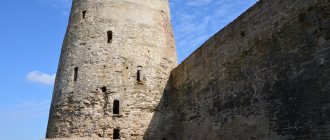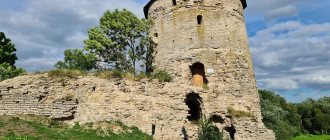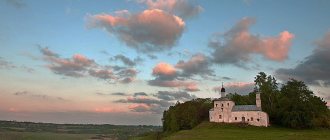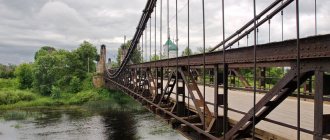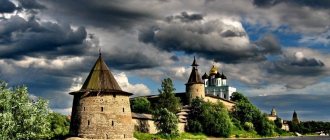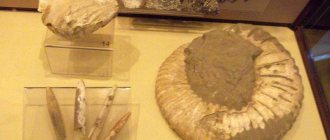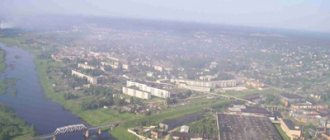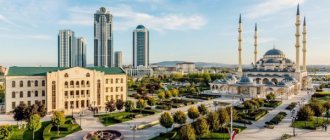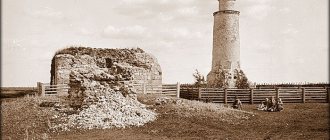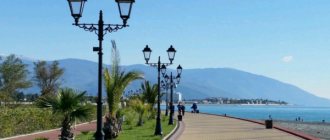The Izborsk Museum-Reserve is one of the most popular tourist sites in the Pskov region. Izborsk is not just a settlement, but a unique corner where nature is an amazing unity with people, and the result is a successful symbiosis of the creations of human hands and natural wonders. Nowadays, on the territory of the museum-reserve, a natural landscape department, a scientific fund and scientific departments have been created in order to study and show visitors the nature and history of this wonderful place as best as possible.
Description and history of Izborsk
Izborsk is a village in the Pechora district of the Pskov region, which is part of the urban settlement "Pechory". This is one of the oldest Russian settlements, which in ancient times was considered a city. Fewer than 800 people live here, but there are a large number of attractions that attract tourists. Its second name is Old Izborsk (in contrast to the village of New Izborsk).
Izborsk is a separate settlement, but is part of the city of Pechora
Izborsk is located in the western part of the Pskov region (30 km from Pskov) near Lake Gorodishchenskoye.
The settlement was first mentioned in the Tale of Bygone Years (862) as a suburb of Pskov. It is believed that Sloven (son of Gostomysl) became its founder. At first, Izborsk was adjacent to Polotsk and was ruled by governors, and in the 10th century it became a separate settlement, in the center of which there was a detinets (inner city fortress), fenced with a high oak wall. Craftsmen lived in posad (on the outskirts of the city). The settlement was also protected, but by a clay rampart and a stone wall.
In the 20th–13th centuries, Izborsk was often besieged by German knights, it burned and collapsed. In 1330, the fortress city was rebuilt on Crane Mountain. Until the 15th century it was besieged 8 times. In 1510, Izborsk became part of the Moscow Principality. In 1581, the fortress was captured by the Polish-Lithuanian Commonwealth, but a year later it was returned to Moscow.
At the beginning of the 18th century, Izborsk became part of the Ingermanland province, which soon became St. Petersburg. Later, the Pskov province emerged in the renamed region, to which Izborsk began to belong in 1777.
During the Great Patriotic War, the city was captured by the Germans and was subordinate to the Reichskommissariat Ostland; it was returned only in January 1945. Since 1996, Izborsk has been a tourist center and nature reserve.
How to get to Izborsk
There are several ways to get to Izborsk:
- by bus (No. 207 or No. 126) from Pskov from the bus station (Vokzalnaya Street, 21) or from Pechory from the bus station (Pobeda Square, 2);
- by train from St. Petersburg, Moscow and other cities with a transfer to a bus in Pskov;
- by car in a westerly direction from Pskov or St. Petersburg along the E95 highway (P-23) or along the M9 highway from Moscow;
- by plane from Moscow, St. Petersburg, Rostov-on-Don, Krasnodar, Sochi, Voronezh, Kaliningrad, Saratov and other cities with a transfer to a bus in Pskov;
- by taxi from any city (the cost of travel from the Pskov bus station to Old Izborsk is on average 500–800 rubles).
From the Novgorod and Leningrad regions you can get to Izborsk through Pskov, and from the Moscow region - through Pustoshka, Opochka and Ostrov
Online evolution and film traditions
– How is the museum-reserve financed today? How does it live?
– The Izborsk Museum-Reserve today is financed from the federal budget, receives funds for all necessary needs, and in addition receives income from paid services. This year, the museum earned a little more than 11 million rubles in six months. Last year, when it was closed to visitors for two months, this significantly affected its income: we earned only 2 million rubles during the same period. Naturally, there are also targeted funds, in particular to support the culture and traditions of the small Seto people. In addition, these are grant funds implemented by the Izborsk Museum-Reserve.
As for state support, of course, we are all immensely glad that during the pandemic, when many were forced to stay at home, the Izborsk Museum-Reserve switched to a remote format. Despite the fact that there were no visitors, we continued to work, create new museum products for visitors to offer people something new, and everyone retained their jobs, positions and, most importantly, full salaries. Perhaps this is the support of the state in such difficult times.
– How do employees promote the museum-reserve and your products today? And do you agree with the opinion that today tourism activity is experiencing a serious shortage of qualified personnel specifically in terms of promotion?
– I cannot agree with the statement that we do not have enough personnel, highly qualified specialists. We see how many tourists come to both the Izborsk Museum-Reserve and the Pskov region. Everyone is very satisfied with our tourism products and services. As for the Izborsk Museum-Reserve, museum employees are actively promoting services and tourism products, using all kinds of means.
Pages on social networks are of great importance in promoting tourism products. The number of subscribers has increased sharply, people share news. Informational reasons are also of great importance in promotion. We always have a lot of them. The museum is actively working, collaborating with the media, with travel companies in the Pskov region, St. Petersburg, Moscow, and here the work of the Izborsk Museum-Reserve is quite successful.
– People love to shoot feature films in the Pskov region. How do you work with film companies? Do they contact you and can the museum-reserve make money from this?
– For many decades, the Izborsk Museum-Reserve has attracted the attention of creative people - artists, writers, poets, film directors; for many years it has been a traditional location for filming films. More than 20 films were filmed at the Izborsk Museum-Reserve. We all know such films as “Andrei Rublev”, “Star of Captivating Happiness”, and later ones – “Ours”, “Can I call you mom?” We made a selection from films, which is shown in the exhibition “Izborsk Land - Holy Places for Russian Culture” in the House of Merchant Belyanin. It includes those fragments that were filmed on the territory of the Izborsk Museum-Reserve, and this video is updated every year.
– The interesting thing is that this was filmed at different times, with some other changes.
– Yes, these are both old and new films. And this also involves promoting the Izborsk Museum-Reserve as an interesting, unique tourist place. We communicate with visitors, and very often people say that they watched, for example, an old film, saw footage from Izborsk - and so wanted to come and visit this place, to see how the territory has changed today, what is here now, how they live here people compared to how they are shown in the film! Therefore, this is also a factor in the promotion of tourism services.
As for new films, various film companies regularly contact the Izborsk Museum-Reserve with a request to provide a location for filming. During 2022, despite difficult conditions for everyone, more than 50 documentaries about Izborsk were shot, and just recently two films were filmed in the museum. One of them is “Girl-Baba”: this is more of a youth film, for schoolchildren. The ensemble of the Izborsk Fortress was used as a film set. And the second film is “The job is done, I’m coming back.” This film was filmed in the museum quarter, and museum exhibitions of the museum-estate of the village of Sigovo were used.
Regarding the question of whether a museum can make money from filming a film, I would not say that this is direct income, but, in principle, filming in exhibitions on the territory of the museum is paid, the price is negotiable, so to some extent this is part of the income, absolutely small compared to paid services, but still.
State Historical-Architectural and Natural Landscape Museum-Reserve "Izborsk"
The small village has gained tourist popularity thanks to its ancient architectural monuments and recently established museums. All the buildings in Izborsk that are offered for inspection smell of antiquity. In fact, the entire village and its surroundings are part of the Izborsk State Historical-Architectural and Natural Landscape Museum-Reserve.
Izborsk fortress
Although the Izborsk fortress was built in the 14th century, it has almost entirely survived to this day. Only part of the protective structure was restored. Interestingly, this fortress was originally built of wood, but a few years later the structure was reinforced with stone. The Izborsk fortress ceased to serve as a fort after the Northern War. For several centuries the buildings were in a deplorable state, but in 1842, Russian Emperor Nicholas I ordered repairs.
Currently, the fortress is part of the Izborsk Museum-Reserve; research work is being carried out on the territory, and its technical condition is constantly monitored. Tourists may be interested in the following objects:
- tower with observation deck - Lukovka;
- Talav Tower (Talavi Zahab) - it is believed that it was named after the Tolova, Talab tribe, which inhabited these lands in ancient times;
- towers Temnushka (an unusual name was given to it because of the small amount of light inside) and Ryabinovka (so named because a rowan grove grew nearby) 15 and 16 m high, respectively;
- Vyshka tower (height - 19 m, was higher than other towers thanks to the wooden superstructure);
- Bell Tower (previously there was a two-span belfry on which hung a bell, which was dismantled in the 19th century);
- Flat Tower (Ploskushka);
- St. Nicholas Cathedral;
- western fortress wall.
The area of the territory enclosed by the fortress walls is 2.4 hectares, the total length of the stone walls reaches 850 m, their thickness is up to 3 m.
Information for tourists:
- address: Pechorskaya street, 39;
- Opening hours: any day from 9:00 to 18:00;
- ticket prices: children - 30 rubles, reduced rates (students, pilgrims, pensioners) - 50 rubles, adults - 100 rubles.
Cathedral of St. Nicholas the Wonderworker
The Cathedral of St. Nicholas the Wonderworker ( Nikolsky) was built in the first half of the 14th century. Together with the fortress and the temple of Sergius of Radonezh and Nikander, it formed the urban center of medieval Izborsk. The first mention of the temple dates back to 1341. At that time, the cathedral was located at the very gates of the fortress (he moved here, to Crane Mountain, along with the old fortress). True, in the Middle Ages the cathedral was called the house of St. Nicholas.
Among my friends there is a woman who has long been interested in the history of religion in Russia. She told me that according to one theory, St. Nicholas was the patron saint of all farmers and hard workers. He also defended all the oppressed and the right. This is supposedly why many ancient churches are named after St. Nicholas.
At first, St. Nicholas Cathedral was monolithic (cubic), but later (in the 19th century) a southern aisle and a bell tower were added to it. The entire structure is made from local stone, and there are no lush decorative elements. Even after years, temple servants and local authorities try not to destroy the ancient architectural style. The modeling of the building is archaic, the apse (lowered projection of the building) is smooth, there are windows in the form of loopholes and a hemispherical dome. Of course, there is no sophistication in such a building, but there is austerity and softness characteristic of the works of Russian architects.
The chapel of the cathedral was erected in the 16th century instead of the wooden Church of the Transfiguration of the same name built in 1349
Information for tourists:
- St. Nicholas Cathedral is located on the territory of the Izborsk fortress;
- You can come here every day from 9:00 to 18:00;
- visiting is free.
Museum Quarter
In 2012, three restored estates were united into a museum quarter, and exhibitions were organized in the buildings themselves.
House of Merchant Shvedov - Museum of the Seto People
The House of Merchant Shvedov is the main house of a 19th-century estate that belonged to a linen merchant. The museum-reserve uses this building for the exhibition “Russians and Seto. One land, common history."
Seto (Seto) is a people who were once called the Pskov Chud. There is a version according to which the Seto received their nickname due to their close location to Lake Peipsi. Representatives of this people gave preference to agriculture, so they were not particularly concerned about the lake, and the Russians, for whom fishing was important, gradually pushed the Seto aside. It so happened that the peoples mixed and the “Pskov miracle” could have completely disappeared.
In Izborsk they decided to preserve the memory and culture of the ancient people by creating an ethnographic exhibition about the Seto people in the 19th century. The exhibition includes the following exhibits:
- clothes and jewelry made from natural materials (wool, linen, rags, ribbons);
- merchant household items and ancient photographs;
- an ethnographic collection collected in the Pechora region over the past 30 years;
- a collection of factory samovars (Batashev, Teile, Gornin factories) and handicrafts;
- a collection of labor tools, spinning wheels, including working ones, as well as household and ceremonial towels;
- traditional folk costumes of Russians and Seto.
The harmonium donated to the museum was produced by the German Hermann Burger factory in 1872.
Tourist information:
- address: Pechorskaya street, 32;
- Opening hours: daily from 10:00 to 18:00;
- Ticket price: adult - 150 rubles, children - 50 rubles, student - 100 rubles.
House and outbuilding of merchant Anisimov
The exhibition, which is located in the ancient two-story house of merchant Anisimov, is a local history exhibition. The official title of the permanent exhibition is “Chronicle of the Slavic-Russian princely city of Izborsk: from the beginning of Russia to the Battle of Poltava.” The uniqueness of this exhibition is that only here are presented some exhibits dating back to the era of the city’s birth. Main exhibits:
- stone crosses of the “Izborsk type” (monuments of ancient Russian paleography);
- authentic examples of defensive and offensive weapons;
- samples of rider and horse equipment;
- reconstructed sets of complete military equipment;
- weapons of Russian warriors from different eras;
- weapons of the knights of the Teutonic and Livonian Orders;
- ammunition of a Polish warrior;
- archaeological collection;
- works of the artist P. D. Melnikov, etc.
A local historian I know, Thomas, told me how objects that belonged to the Teutonic knights ended up in Russia. The order was created in 1199. Its founders planned to develop their brotherhood to the level of the Templars, so the necessary papers and rules were drawn up. Brotherhood members were expected to live in poverty, help the weak and protect the wounded. But later the Teutonic Order began to lay claim to neighboring lands. The crusaders, weakened, unprepared and wearing heavy armor, went to war again and again, but did not always win. Russians know from the school curriculum about the Battle of the Ice (when Alexander Nevsky defeated the army of the crusaders, and they went under the ice).
You can look at real knightly armor with your children.
The exhibition “Chronicle of the Slavic-Russian princely city of Izborsk: from the beginning of Russia to the Battle of Poltava” is divided into 2 halls
Information for tourists:
- address: Pechorskaya street, 41a;
- Opening hours: daily from 10:00 to 18:00;
- Ticket prices range from 50 to 150 rubles.
Exposition of paintings “Izborsk Chamber of Russian Literature and Orthodox Faith”
In the outbuilding of the merchant Anisimov’s estate there is an exhibition “Izborsk Chamber of Russian Literature and the Orthodox Faith.” The author of all the paintings presented at this exhibition is People's Artist of the USSR and Honorary Citizen of Pskov Pyotr Ossovsky. The paintings are mainly dedicated to the lives of two great figures of Russian history and culture who lived and worked on the ancient Pskov-Izborsk land:
- Princess Olga, who made a great contribution to the development of Orthodoxy in Rus' and, according to legend, was born near Pskov;
- Alexander Pushkin, who can be called one of the creators of the modern Russian language and whose fate is connected with Mikhailovsky (a village near Pskov).
Some works are dedicated to churches, revered elders and teachers of the Orthodox Church. There are other exhibitions in adjacent rooms (antiques, local history materials, etc.).
Photo gallery: different sections of the exhibition “Izborsk Chamber of Russian Literature and Orthodox Faith”
The ideological center of the entire chamber is the paintings dedicated to Princess Olga and Pushkin, whose life and work are inextricably linked with the ancient Pskov-Izborsk land
A number of paintings are accompanied by texts written by Valentin Kurbatov, which, according to Ossovsky’s plan, should contribute to a deeper perception of his paintings
All the paintings presented at the exhibition are connected by one idea.
“Blagovest” depicts a monk-ringer symbolically performing a solemn ringing, the silent sounds of which echo over the Izborsk fortress
The painting “The Road to the Temple” is dedicated to the return of the Orthodox faith to Russian soil
Information for tourists:
- address: Pechorskaya street, 41b;
- Opening hours: daily from 10:00 to 18:00;
- Ticket prices range from 20 to 100 rubles.
Exposition “Gate of High Russian Style”
In one of the buildings of the merchant Anisimov’s estate there is another exhibition “The Gates of the High Russian Style” - this is an exhibition dedicated to the 400th anniversary of the House of Romanov. The visitor is invited to view the following exhibits:
- sketches of paintings for the chapel of St. Anastasia in Pskov;
- frescoes dedicated to the Feodorovsky Sovereign Cathedral;
- works dedicated to the Society for the Revival of Artistic Rus';
- copies of the disappearing frescoes of the Feodorovsky town in Tsarskoe Selo;
- photographs of the Chambers of the Romanov Boyars of the late 15th century;
- photographs of the family of Emperor Nicholas II, etc.
The special pride of the exhibition is the items associated with the “Feodorovsky town” (Fedorovsky, Russian). “Russian Town” is an architectural complex built in the 20th century. These buildings are also called clergy houses. The complex was built as a museum object, but it is managed by the Tsarskoe Selo deanery (since it is located not far from Tsarskoe Selo). Sketches of future houses were approved by the last Russian Tsar Nicholas II.
The exhibition project is part of the exhibition “Izborsk - Holy Places for Russian Culture”, which is being worked on by employees of the State Historical-Architectural and Natural Landscape Museum-Reserve “Izborsk”
Truvorovo settlement
Truvorovo (Izborskoye) settlement is a place where there was a small settlement in the 7th–18th centuries. The settlement was founded by the Krivichi and is occupied by Slavic (wooden) and non-Slavic (with clay floors) houses. Nearby there is an ancient cemetery with stone crosses from the 15th century. The name of the settlement came from this cemetery.
One of the large stone crosses in this cemetery is called Truvorov (above Truvorov’s grave). There is no exact historical evidence, but old-timers believe that this name is associated with the ancient Varangian Truvor, the legendary brother of Rurik, who was called to reign in Novgorod. Empress Catherine II also believed in this legend. She ordered the printing of a medal, on the tail of which was written “Truvor died in Izborsk in 864.” By the way, Gorodishchenskoe Lake is named after the Truvorov settlement.
Truvorovo settlement is located on the triangular cape of Zhuravya Mountain at an altitude of 48 m. The total area of the object is 1 hectare. Under the site there is a protective earthen rampart 6 m high and a ditch 3 m deep.
Several crosses have been preserved at the Gorodische cemetery; near Truvor’s grave there is a sign with the corresponding inscription
Information for tourists:
- Truvorovo settlement is located next to the Izborsk fortress;
- Free admission.
Korsun Chapel
The Korsun Chapel was built in 1929–1931 (presumably) on the site of an old burial ground. The construction project was drawn up by the architect Alexander Vladovsky (this is indicated on the wall of the chapel). According to legend, the chapel stands on the site where there used to be a mass grave of soldiers who defended the Izborsk fortress in 1657. The chapel is named after the icon of the Korsun Mother of God, painted by Pimen Sofronov.
There is a legend about how the city was saved. In 1685, the Germans attacked Izborsk. It was planned to capture the fortress, but Evdokia (a local widow) found out about this. She locked herself in her cage, placing an icon in front of her, and prayed all night. Then the woman told how the face on the icon streamed myrrh. The cleric Simon, and later Archbishop Macarius, learned about the miracle. For forty days prayers were sung near the icon, and the enemy retreated. Since then, Izborians have honored the icon of the Korsun Mother of God.
A small bright chapel stands near the Talavskaya (square) tower of the Izborsk fortress. It looks contrasting against the background of the gray fortress walls, but local authorities are trying to preserve the sophisticated appearance of the holy place.
In the eastern and western walls of the chapel there is a foundation cross and a detail of an ancient cross from the former burial ground here.
Information for tourists:
- the chapel is located near the Izborsk fortress;
- You can come here for free.
City architecture
Izborsk, although a rather small city, is divided into two main parts - Old Izborsk , where most of the historical attractions are located, and New Izborsk - in fact, it is a residential city.
The main attraction of Old Izborsk is deservedly considered the Izborsk Fortress . It was around it that the town once spread out.
The outstanding stone fortress, built back in the 14th century, became famous for the fact that it was never captured by enemy troops during its existence, although such attempts were made dozens of times. This legendary building is located on Zhareva Mountain. It has an unusual shape - built in the form of an irregular triangle with rounded corners.
Already due to its location, the fortress became practically impregnable from both sides (the reason for this is the steep slopes). The third side is protected by deep ditches. The walls, built from local limestone, have an average height of about 8 meters and stretch 623 meters in length.
It is believed that the fortress was originally made of wood (around the 11th century), but later it was rebuilt from stone, and for more than 200 years it did not need “modifications” - its design was so perfect.
Important! You can simply walk around the vast territory of the fortress, having a lot of fun, or you can order the services of a guide - then your walk will be more informative.
The following attractions have been preserved and are available for inspection in the Izborsk Fortress:
- Lukovka Tower and its Arsenal;
- Talavskaya Tower;
- Chapel of the Icon of the Kosun Mother of God;
- Church of St. Sergius of Radonezh and Nikidar;
- Temnushka Tower;
- Ryabinovka Tower;
- Tower Tower;
- Flat tower;
- Southeast wall;
- North wall;
- Nikolsky Gate.
Nikolsky Gate
In addition to the fortress in Izborsk and its region, you can also see the following historical architectural monuments:
- Truvorovo settlement;
- Miller's Manor (ruins);
- Anisimov Estate;
- House of M. S. Belyanin;
- House of merchant Shvedov.
Hotel complex "Izborsk"
The Izborsk hotel complex was opened in 2010. The hoteliers chose the ancient merchant estates of Garshek and Belyanin (1908) as hotels. This is the only architectural landmark restored by a private individual for the 1150th anniversary of Izborsk. The administration of the hotel complex was able to buy the property from the state with one condition - not to alter the spatial composition of the estates and their facades. The building even retains the walls of the first floors, 1 m thick, made of rubble stone.
You can not only inspect the complex, but also live in it, and then you will have access to:
- rooms of various price categories (hotel capacity - up to 75 people);
- restaurant and summer terrace;
- sauna, swimming pool, spa;
- conference hall;
- souvenir shop;
- master classes of folk crafts, etc.
The owners of the Izborsk complex have preserved the spatial composition and appearance of the buildings.
Information for tourists:
- The address of the unique hotel is Pechorskaya Street, 13 (300 m from the Izborsk Fortress);
- Opening hours: daily, 24 hours a day;
- Room rates start from 2,300 rubles per night.
Where to go in Izborsk with children?
Tourists traveling with children, I think, will enjoy the following attractions:
- Izborsk fortress . On its territory you can take a fascinating walk with your children, telling them about the rich history of these places.
- Slovenian keys . Take a walk along the picturesque Malskaya Valley and drink miraculous water from the legendary springs.
- Feed the swans on Lake Gorodishchenskoye .
- Visit the Izborsk Ostrich eco-farm , where you can not only watch rare birds, but also feed them. And as a souvenir you can bring home a real ostrich egg. Also here you will see reindeer and Romanov breed sheep, rabbits, geese and cute raccoons. In addition to meeting the animals, children can enjoy playing on the playground.
If anyone has already visited cozy Izborsk, I will be happy to read about your impressions of the city in the comments. And for those who are just deciding on this trip, I highly recommend visiting the city. There will be many impressions.
The beauty of nature of the Russian North
The surroundings of Izborsk are rich in the beauty of northern nature - dim, but attractive. Natural monuments are also included in the Izborsk State Historical-Architectural and Natural Landscape Museum-Reserve.
Slovenian keys
The Slovenian springs are karst-fissure springs that have been flowing for more than a thousand years. In the first geographical description of the Russian land it is written that Izborsk stands on the Slovenian Springs. For 3–4 km, groundwater passes through limestone and clay, purified and saturated with calcium and minerals. Therefore, spring water is considered beneficial and even healing. In a second, up to 4 liters of water are thrown onto the surface. There are only 12 springs in Izborsk, so they are sometimes called the Keys of the 12 Apostles.
The water flows out in the form of streams, and on the rocky surface it turns into low waterfalls. Tourists from different parts of the country come to the multi-level cascades. Local residents collect this water as drinking water, although, according to some reports, Rospotrebnadzor does not recommend using it for drinking.
Streams of mineralized water stretch for 25 km and flow into Lake Gorodishchenskoye.
The springs never completely disappear, but their “activity” depends on how dry the year was
Information for tourists:
- the keys are located next to the Truvorov cemetery (north of the fortress), exact coordinates: 57.714344°, 27.860846°;
- You can admire the cascades and wash yourself with cold water from the springs for free.
Izborsko-Malskaya Valley - a natural monument of the Pskov region
The Izborsk-Mal Valley is a natural monument with an area of 1,792 hectares, dotted with ravines and small never-drying streams. It is believed that it arose about 10,000 years ago (after the disappearance of the last glacier). It is in this valley that the main attractions of the museum-reserve are located: Izborsk Fortress, Gorodishchenskoe Lake and Slovenian Springs, Truvorovo Fortification and Truvorov Cross.
In the valley you can see several interesting geomorphological objects:
- the Snake Beam ravine, which is famous for its large number of crawling reptiles;
- Mill stream in the ravine of the same name, where 7 mills operated in ancient times. This stream is fed by underground springs, so the water level practically does not decrease. And from the mills only the remains of stone millstones have survived;
- the “Kipun” spring, similar to a geyser, the water in which comes out from under the outcrops of limestone tuff;
- tuff deposit.
Izborsk local historians told me what is remarkable about the local tuff. It's actually a stone that was once used to build churches and houses (a type of limestone). But Izborians are proud of something else. The entire western slope of the Izborsk valley contains a 12-meter layer of tuff. Local historians believe that these deposits are almost 10,000 years old. True, tuff mining is now prohibited.
Izborsk attractions are mainly located on the territory of the Izborsk-Mal Valley
You can walk around the valley at any time and for free. There are 2 options:
- self-inspection (if you are driving, you can leave it on one of the residential streets of Izborsk);
- as part of an excursion from the fortress (it will take less time).
Gorodishchenskoye Lake
Gorodishchenskoe Lake is a reservoir 0.5 km long and 0.25 km wide. The average depth of the lake is 3 m. The reservoir is fed by the Slovenian Springs, the Smolka River and underground springs. The water temperature reaches 17 oC in the hottest weather; in the summer you can swim here. There are a lot of algae at the bottom of the lake (more than 200 species), and the surface of the water is covered in places with water lilies. Local fishermen like to go to the reservoir, as there is a lot of fish here (rudd, pike, bleak, etc.).
Tourists here also like white swans. The birds are accustomed to the almost constant presence of people on the walkways. Sometimes swans swim to the shoreline to eat from human hands. Birds do not fly away from Lake Gorodishchenskoe even with the onset of cold weather.
In Lake Gorodishchenskoye, the water is always cool, since the reservoir is replenished by underground streams.
Lake Gorodishchenskoye is located at the lowest point of the Izborsk-Mal Valley.
Museum today
These days, the Izborsk Museum-Reserve is quite popular among tourists. The Izborsk fortress is being intensively restored, the Lukovka tower and other towers have been restored, and St. Nicholas Cathedral, dating back to 1344, has begun to function.
Izborsk Museum-Reserve
There is an observation deck on the Lukovka tower, allowing you to enjoy a picturesque panorama of the surrounding area of Izborsk.
What time of year is best to come to Izborsk
The ideal time to relax in Izborsk is summer. Everything is green, even the old fortress looks more medieval. In addition, in winter you won’t be able to walk around the valley for a long time. There are no special seasonal attractions in Izborsk, but paragliding flights are conducted over the valley in late spring. Fans of winter recreation will appreciate the Slovenian Springs - when the water freezes, fancy slides are formed (very beautiful as a background for photographs).
Paragliding in Izborsk
There are few places for paragliding competitions in the northwestern part of Russia, so the Izborsk hills and slopes are popular. Athletes gather mainly at the Truvorov settlement and start with the arrival of a “lucky” wind. Usually flights are carried out with north-easterly winds in late April - early May.
Video: paragliders over Izborsk
City monuments
The most famous and mysterious memorial signs of Izborsk are the mysterious stone crosses . These ancient religious monuments are scattered throughout the city and its surrounding areas. Their greatest concentration is observed in 3 places of Old Izborsk. A large number of stone crosses are located in the Skudelnya tract on the site of an ancient burial ground. Archaeologists suggest that burials were made here from the 11th-12th to the 16th-17th centuries. Another group of crosses is located on the territory of the modern cemetery in Truvorov settlement and next to it. Crosses were also found in the villages of Vastsy, Maly, Teshevitsy, Miltsy, Gnevkovo, Petrovskoye, Iverets, Poddubye and others.
Particularly famous is the Truvorov Cross , located in front of the entrance to the settlement. Here you can see 2 stone slabs on which “Babylons” are carved - geometrically correct figures that were used to mark buildings. They are based on the ancient plan of the Babylonian temple.
Did you know? No one knows whose ashes are buried under the slabs; they believe that they belong to the unknown builder of the Izborsk fortress.
On one of the slabs there is a large stone Truvorov cross. It is carved from a single slab of limestone and reaches 2.28 meters in height. “Tsar, Glory, Nike, Jesus Christ” has been preserved on it . No one knows exactly what these words mean, but legends have long been passed down that the cross marks the grave of Truvor, who came to reign in Rus' with his brothers in 862.
Sights of Izborsk for young tourists
With children you can visit attractions that are designed specifically for young tourists:
- program “Chronicle of the ancient city of Izborsk”;
- "Belkapark".
"Chronicle of the ancient city of Izborsk"
“Chronicle of the Ancient City of Izborsk” is a special children's program for students in grades 3–7. In essence, this is an educational game that takes place at the exposition in the house of the merchant Anisimov. The game program lasts an hour, during which children will learn how chronicle writing arose and who was one of the first chroniclers.
Then comes the active part of the team game:
- The children get acquainted with the main chronicle events of the ancient city of Izborsk.
- They receive a game sheet, divided into separate fragments containing chronicle information about Izborsk.
- Then they find the corresponding fragment on the game sheet, cut it out, connect (glue) it with the previous one.
- At the end of the game, schoolchildren receive a chronicle scroll (they can take it with them).
During the game, children gain knowledge about the history of Izborsk in an interesting way.
Information for tourists:
- You can take part in the game at the address: Pechorskaya street, 41a;
- The ticket price depends on the size of the team (up to 15 people - 3,750 rubles per group, from 15 people - 250 rubles per child).
Rope park "Belkapark"
Belkapark is located on the territory of the Malskaya Dolina active recreation park. The rope complex occupies 2 hectares, the total length of the routes, on which 160 obstacles are located, is 2.5 km. Among the attractions there are the safest children's routes for children up to 140 cm tall and weighing up to 50 kg, and black tracks with 38 stages mainly for adults up to 205 cm tall and weighing up to 110 kg. The trolley slopes (the most difficult are 400 m long) and 5 climbing walls of varying heights and complexity will be interesting.
Belkapark has attractions for adults and children
There is a mini-menagerie in Belkapark. This is a small petting zoo with small animals, including the symbols of the complex - squirrels.
Information for tourists:
- address - the village of Rogovo (about 5 km north of Izborsk);
- Opening hours: Saturdays from 10:00 to 18:00;
- ticket price - from 100 to 800 rubles (depending on the age of the visitor and the time spent in the park).
See the museum, show yourself
– How has the pandemic affected attendance at the Izborsk Museum-Reserve? And what does the museum offer tourists today?
– According to strict reporting documents, for the first half of 2020, given that the museum was closed to visitors for more than two months, there were few visitors, just over 20 thousand people. The ensemble of the Izborsk Fortress and museum exhibitions were closed to the public, but the Izborsk Museum-Reserve is not only a fortress and exhibitions, it is also a wonderful, amazing nature, it is an open-air museum. And therefore, even during the pandemic, people found the opportunity to walk around the territory of the reserve, around the natural monument, breathe fresh air and relax, go out into nature, where it is safe and there are no large crowds of people.
As for tourists today, they come to us mainly from Moscow, Moscow region, St. Petersburg, Leningrad region - this is about 90% of visitors, Leningrad region. Naturally, Pskov residents love to visit Izborsk: they come on weekends, on excursions, just to stroll through the territory of the museum-reserve, enjoy the beauty, amazing landscapes, ensemble, and the Izborsk-Malskaya Valley. Guests visit the museum cafe “Blinnaya”, where after a walk they enjoy tasting pancakes with different fillings, drinking tea with Izborsk herbs - in general, they have a good and useful time. In addition to the cities I have listed, the Izborsk Museum-Reserve is visited by guests from Novgorod, Izhevsk, Rostov-on-Don, but there are fewer guests from other cities.
The Izborsk Museum-Reserve has prepared new exhibitions. Now in the Izborsk Museum-Reserve, in the House of the Merchant Belyanin, an interesting art exhibition “Reflection in Water” is taking place. It is organized jointly with a creative association - a salon of contemporary art, in which more than 60 artists take part.
Here, in the House of Merchant Belyanin, there is an equally interesting exhibition called “Book Archeology”. This is an exhibition of second-hand book dealer Ivan Goryachev. His idea was to create an exhibition of forgotten objects found in books. Such an exhibition was held in St. Petersburg, and the Izborsk Museum-Reserve joined this idea, and now a joint exhibition is being held here.
One of the most important, important events is the long-awaited preview of the major international exhibition project “Izborsk Round Dance” opened at the Izborsk Museum-Reserve. This is an exhibition of costumes, in which seven museums of the country take part: the Kostroma State Museum, the Smolensk Museum, the Novgorod State United Museum, the Kizhi Museum-Reserve, the Izborsk Museum-Reserve, the Academy of Arts of St. Petersburg, the St. Isaac's Cathedral Museum-Reserve " The museums I listed provided exhibits for this exhibition. It takes place in the House of Merchant Shvedov. We hope that we will soon be able to show it in the new exhibition space.
Also in the House of Merchant Shvedov there is an exhibition “Toy Story”. This is also a very interesting project, probably one of those rare cases when a large collection was donated to a museum-reserve, more than 800 pieces of museum objects - toys collected from different regions of our country. After they gave us such a wonderful, valuable gift (the museum’s collection was immediately replenished by more than 800 items), he added these museum items to the collections and immediately made a very interesting exhibition in the House of Merchant Shvedov.
In addition, the Izborsk Museum-Reserve joined the celebration of the 800th anniversary of the birth of Alexander Nevsky. In connection with this event, the exhibition dedicated to Alexander Nevsky “Alexander Nevsky - Savior of the Russian Land” has been updated, which takes place outdoors, on the territory of the ensemble of the Izborsk fortress, on the eastern side. Thousands of visitors have the opportunity to view this exhibition.
The exhibition “Winners” is traditionally opened in Nikolsky Zahab, which is dedicated to Izborian soldiers, participants of the Great Patriotic War, who fought on the territory of Izborsk, Pechora region.
I would also like to talk about the new exhibitions that are currently running at the Pechora History Museum. An equally interesting exhibition is a joint project with the Alexander Sergeevich Pushkin Museum, with the Pushkin Museum (Moscow). It is called "Pushkin's Tales". Also, the Museum of the History of the City of Pechora is currently hosting an exhibition of dolls by the author - theater artist Alla Anatolyevna Frolova. The exhibition is called “Twelve Months”: each doll, created by the author’s hands, represents a month of the year.
This is a small list of events and exhibitions that you can visit at the Izborsk Museum-Reserve. Naturally, museum exhibitions and the ensemble of the Izborsk Fortress are always open to our guests. This season, the Izborsk Museum-Reserve has updated its souvenir line.
I would like to mention a small surprise: together with partners - Pavlovsk and the municipality of Aluksne (Latvia) - the museum-reserve has been implementing an international cross-border cooperation project under the Russia-Latvia program, called “630 miles of sensations” for more than a year. As part of this project, a large tourist route with the same name “630 miles of sensations” was created. Part of the route passes through the territory of Latvia, part - through the territory of Russia. Unfortunately, now, due to the fact that the borders are still closed and restrictions are in force, our guests cannot travel along the entire route, but we hope that soon it will be possible to travel abroad. In the meantime, the section of the route from Izborsk to Pavlovsk is starting to operate.
This route includes many attractions in Izborsk, Pskov, Pechora district, Pavlovsk, museums of the Leningrad region. This also includes accommodation, food, souvenir and information centers.
What's interestnig? Because while the museum was closed to the public for two months last year, its team continued to work remotely, master the online format, and today we work in a mixed format - online and offline. In this regard, a mobile application has been created as part of the “630 miles of sensations” route. All partners have stands where, using a QR code, you can download a mobile application and get acquainted with the objects that this route offers.
And another small surprise for our guests: within the framework of this mobile application, you can open an element of augmented reality, when the hero depicted on the stand, using the mobile application, comes to life and begins to move, a lively, dynamic story takes place about the place in which the traveler is located. First of all, the hero welcomes the traveler, talks a little about the Izborsk Museum-Reserve, the history of Izborsk, and invites them to meet on the pages of other stories, that is, in the places participating in this project. Here is a list of events that the Izborsk Museum-Reserve offers to our guests today.
How many days to spend in Izborsk
Izborsk (museums, fortress, temples, etc.) can be explored in 1 day. If you are a lover of outdoor recreation, you can stay in the Izborsko-Malskaya Valley or, for example, near Lake Gorodishchenskoye. In this case, you can rent a house at one of the local camp sites.
I travel a lot around Russian cities. Sometimes, having found some beautiful place, my company stays overnight right in the forest/mountains. For such cases, there is an irreplaceable thing - a tent, which takes up little space in your backpack. For example, my one-person tent fits in the bottom of an 80-liter backpack. This tent can easily sleep 2 people (or even 3). True, this method of spending the night outdoors on a budget is convenient in summer or spring. With the onset of cold weather, spending the night on practically bare ground is dangerous for your health.
If you come for a few days and have some time left after visiting the main attractions of Izborsk, then visit the Malsky Monastery.
Malsky Monastery
Malsky (Malsky Spaso-Nativity) Monastery was built in the 15th century. It was planned that monks would live here, but in the 16th century the monastery already had 2 churches, and 12 monks lived here. Russians and representatives of the Seto people came to the church. And by the end of the 16th century, the wooden buildings of the monastery were destroyed by the Hungarians. A few years later, the restored monastery was destroyed again - this time by the Swedes.
At the beginning of the 18th century, Empress Anna Ioanovna ordered the restoration and strengthening of the temple buildings. The Peace of Nystadt of 1721 was concluded between Russia and Sweden, and the temple was headed by Bishop Raphael Zborovsky. The monastery was rebuilt and strengthened.
In pre-war times, the object became part of Estonia, and returned to Russia only in 1945.
Since the Great Patriotic War, when the region was occupied by the Nazis, the inscription “Beware of mines!” has been preserved on the inner wall of the altar semicircle of the basement of the refectory church.
Information for tourists:
- The Malsky Monastery is located between Izborsk and Pechora (18 km from Izborsk);
- You can visit the temple for free and at any time.
Natural attractions of the city
The most famous natural attractions of Izborsk are the beautiful Slovenian springs of the 12 apostles . They are believed to have healing powers, which is why many thousands of tourists come here every year.
Did you know? The healing power of water is also confirmed by modern scientific research - it has high mineralization due to the fact that it passes through many limestone rocks.
This is a very picturesque and inspiring place. The keys got their name because they consist of 12 jets. Each of them not only has its own name, but also has a distinctive energy.
And Izborsk itself is located in the very picturesque
Izborsk-Malskaya valley with its characteristic landscapes, landscapes, flora and fauna. Also near the fortress there is a wonderful Gorodishchenskoye Lake .
Tips for staying in Izborsk
Here are some tips for your stay in Izborsk:
- when visiting the fortress, follow strict rules (do not walk on the walls, do not light fires, do not pick flowers, etc.);
- when walking to the Slovenian Springs, do not climb high rocks or a steep wall (you may slip);
- Before visiting the fortress towers, study the safety rules (do not climb into loopholes, do not lean over the railings, etc.);
- treat water from natural sources with caution (drinking it can be dangerous);
- do not cut down trees or make fires in the territory of the Izborsk-Mal Valley;
- There may be problems with withdrawing cash (there are few ATMs here), so prepare the required amount in advance;
- if you are traveling for several days, take care of warm clothes (it is cool in the valley at night);
- if you go for a walk in the dark or early in the morning, take a flashlight with you (there is heavy fog here due to cool water bodies);
- Prepare your tourist map in advance.
Tourists I know told me that Izborsk has a special system of paying for visiting museums. You can buy a “single ticket” (cost 150 for schoolchildren, 300 for pensioners and students, 500 for adults and 800 rubles for a family), which will give you the right to visit both the fortress and all exhibitions with one ticket. This is beneficial if you are interested in the entire city, and not a specific object.
It’s better to start exploring Old Izborsk from the Truvorov settlement and the Izborsk fortress
Religious buildings in Izborsk
Izborsk has long been famous for its chapels, of which there are a huge number in the city and its outskirts. All of them are interesting in their own way, and although most of them have a rather ordinary appearance, almost every one has some kind of extraordinary story associated with it.
Chapels of Izborsk:
- Chapel of Elijah Mokroy;
- Chapel of the Sovereign Icon of the Mother of God;
- Chapel of Frol and Lavra;
- Chapel of the Life-Giving Trinity.
Also in Old Izborsk there is an ancient St. Nicholas Cathedral , the first mention of which dates back to 1341. It was located at the entrance to the Izborsk fortress, which was supposed to raise the morale of the soldiers guarding it from enemy attacks. The building in which the cathedral is located has a cubic shape. A large helmet-shaped dome and drum are securely attached to the massive arches. Also next to the cathedral there is a rather rough-looking bell tower, completed in 1849.
Other places of worship in Izborsk and its environs:
- St. Nicholas Church (Truvorovoe settlement);
- Spaso-Onufriev Skete (Malskaya Valley);
- Church of St. George (Senno);
- Church of the Iveron Icon of the Mother of God (Zakhnovo).
